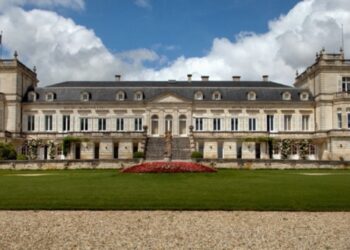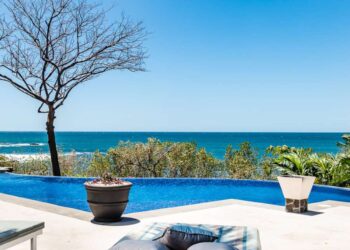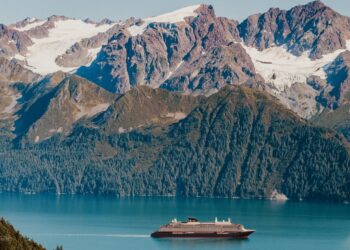Hiking on Spain’s storied Camino de Santiago, I’m having an existential crisis — or maybe it’s just a flash of enlightenment. On this legendarily mystical path to Galicia’s medieval city of Santiago, home to the glorious cathedral that purportedly holds the remains of St. James, rumination happens — as does transformation, even if it isn’t why you’ve come or what you’re seeking. Like the thousands of pilgrims who’ve trekked the Camino for a millennium, I find I have plenty of time to think. I plod along, shifting perspectives with each step.
A plethora of well-worn trails lead to the destination. Many of them wend through other countries such as Portugal or France, connecting in the northwestern portion of the Iberian Peninsula — leading at last to Santiago. The Camino once attracted only the religious — supplicants hoping to traipse their way to heaven. But, today’s Camino jaunt draws seekers, inveterate travelers, athletes, the grieving, the celebrating, the lost, the found, and the incurably curious — among others. In truth, the much trammelled trail has been a symbolic march in trying times for centuries — and no matter the initial motivation, it changes everyone who walks it. Foot sloggers of all ages tread for miles to arrive in Santiago, sometimes taking a month or more to complete the journey. Others, like me, do the trail in spurts over time — two weeks, a week, a day, an hour — slowing, rambling all the way to the city. On the Camino, I’ve walked with the fit and the ailing. I’ve hiked it solo and with groups. I’ve ambled beside students, artists, priests, and engineers, finding peacefulness in simply putting one foot before the other. While I’ve completed the Camino’s various stages in companionable silence with strangers, I’ve also met new friends on the trail. As every pilgrim marches toward Santiago, stories get shared, secrets divulged. On the “way,” sometimes we are the helper, and sometimes the one helped. But is there a luxurious Camino experience?
The Luxury Way

While the Camino odyssey used to mean sleeping in church basements on a cot or bunking in primitive, albeit affable, hostels along the way, the adventure has gone beyond carrying your life’s possessions in a backpack for a rugged “prove-yourself-worthy” getaway. While nobody can walk (or bike) the miles for you, privation on the Camino isn’t the goal — the secret is simply to keep moving. Modern-day Camino trekkers can contract with luxury outfitters such as Backroads who convey your baggage from inn to inn, each stopover a haven along the way. Their immersive itineraries and stellar guides showcase curated highlights, distilled experiences that bring the Camino legend to life.
Eight Reasons to Take a Step on the Camino
The Scenery
The “Way’s” variety of routes take you up hillocks, through meadows, ascending mountains, careening around rugged coastlines, sauntering by roiling seas, and passing by orchards, vineyards, and farmland. “Buen Camino,” people will call from their flower-bedecked homes as you pass through quaint villages.
The Routes
The most popular walk, the Camino Frances (or the French Way) snakes some 500 miles from France’s Basque border. Full of exuberant and determined hikers, this trail to Santiago begins in the small French village of St Jean Pied-de-Port. On it, even if walking solo, you’ll never be alone. But, it’s not the only avenue to Santiago. A host of other pathways twist toward the city, including the lesser-traveled Portuguese Way, which begins in Lisbon. I recently walked that route with Backroads.
The Symbols

One of the Camino’s evocative symbols is the scallop shell. Perhaps derived from the original legend (that St James sailed to Spain on a boat made from a single scallop shell); maybe nurtured because of the coastal region’s abundance of scallops (and other shellfish); or possibly because the scallop shell has vertical lines etched by the sea that resemble the many paths into Santiago, the scallop shell marks the trail along the way as signage. It can also be seen hanging around the necks of pilgrims or draped on their backpacks.
Slow Travel
By definition, to travel on foot means to go slowly. On the Camino, pilgrims delve deeply into local culture. As you hike, you’ll notice details of the terrain more clearly and travel, as well, into your own inner landscape.
The Food

Expect shellfish and seafood from the Galician Coast, as well as heavier fare sure to nourish wanderlusters, who sometimes walk 15 or more miles a day. You’ll also find empanadas, pork sausage, stews, and meaty dishes accented with potatoes. Extraordinarily inexpensive, local wine (Albariño and Godello) and hearty beer always come accompanied by complimentary tapas.
The Celtic Past
Sometimes referred to as the seventh Celtic Nation, the province of Galicia, revels in its Celtic roots. Across its reaches, a slew of Celtic ruins occupy hillside niches, their mysterious stone huts reminiscent of Ireland’s standing stones.

The Hotels
While some travelers proclaim that where they sleep doesn’t matter, others know a characteristic hotel with at least a modicum of swank and local style will boost the mood of weary walkers. For adventurers with a penchant for splendor — or at the very least boutique-y chic — numerous desirable hotels can be found just off the Camino. Consider, for example, staying in a parador, well-appointed hotels run by the Spanish government, ensconced in historical structures from castles to monasteries. I walked the Camino with Backroads, staying in hotels as diverse as a family-owned winery estate, a centuries-old fortress by the sea, and a hotel built into a former mill by a river.
Going with Backroads
Legions of adventure travel companies and local experts offer guided trips that support and guide hikers and bikers on the Camino. They range from basic to super luxurious. I chose Backroads, a family-owned outfitter with a half-century experience delighting guests with meaningful, elevated programs. They offer hundreds of active itineraries in nearly 60 countries. For the Camino, their trips range from all-female jaunts to group trips that combine hiking and biking.
Feature image, courtesy, Richard Wong/Backroads







